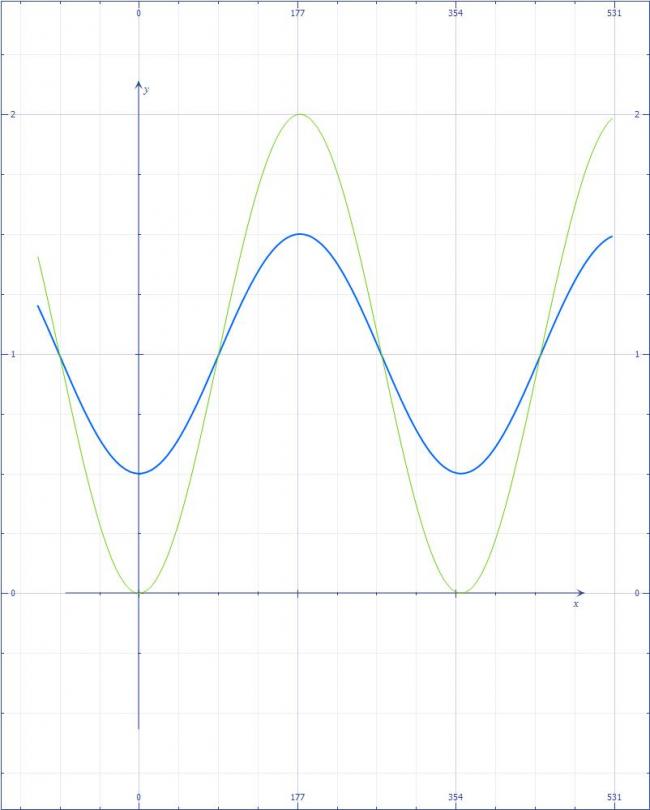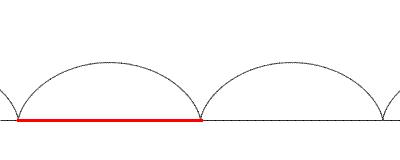see here one thing can be said :
avg speed =|avg veocity|
as integral(vydt)=0
so avg speed =|avg veocity|
now still how both avg speed is equal.......?
suppose a CD is purely rolling on the floorjust imagine the balance....
the outer radius is R and inner radius is r
after one complete rotation the initial pt of contact with ground again comes in contact with the ground...thus it travels a linear distance of 2Ï€R
also the lower most pt on the hole again comes to its lowermost position again.....distance travelled is 2Ï€r
now as the linear dist travelled by both pts must be equal, 2Ï€R=2Ï€r,
giving, R=r which is absurd.....
so the question is where was i wrong???????????????????
-
UP 0 DOWN 0 0 42

42 Answers
kaha????????????if my reasons are cleear then they take equal time for equal displ.....i'm sorry itz avg vel dats equal...
@qwerty no, if dats the condition then only distance covered will be same........coz r<R
u see at t= 0 also vinner >vouter
who said avg spd n avg vel has such a relation???????????avg spd is dist/time......n avg vel is displ/time..........
wat abt at time =t ??at t= T/2 , vinner < vouter
ATGS edit #30 ..u again wrote vel in place of speed [3]
let us look into the answer now........
the thing is purely rolling with certain ω and v...........v=Rω.....so the dist travelled by pt of contact is surely 2πR
but had a similar thing of radius r had rotated with vel v then there would have been forward slip...since v>rω.....thus we cannot apply 2πr for the small block....
there is no chance 4 avg vel for not being equal tho.....the misconception n the question was more basic..........
avg vel is a scalar........so it has no negative sign 4 downward or upward motion......4 avg speed the vy can never add up to 0.......
xyz i agree with d calculus part ....but v =dx/dt
so vdt = dx
so integral vdt = x ...
suppose a particle goes around a circle once , and stops . Its quite obvious that v (avg) = 0 ...as u said ... so is avg speed also zero ?
shubonmoy how can u say average speed are qual ???????????
avg speed of innerpoint is > outer point
xyz it obviously isnt going round the circle with const vel ....since it started from rest ...
kk [1]................
i confused over a small thing.......
it all happened coz of atgs [3] .......
atgs show that avg vel cannot be unequal.........
Subhomoy..i think i had given u the answer at school.....anyways....some extremely good reasonings have been posted here :-)
@ shubhomoy, your explanation in #32 is correct..
@karna: the trajectory traced by a point is a cycloid which is out of the reach of jee..
I dont agree :P
nice trap set by subhomoy :)

blue is the trajectory of inner point and green is the trajectory of outer point
needless to say the inner ponit rolls out a distance more than 2Ï€r due to forward slip
omg this one! [3]
Everything started that day...
10 am to be exact..
18th was the day of november...
And suddenly I could understand all the concepts that used to haunt me even just 1 day ago...
Ultimately it was this day that my JEE preps began... slow and steady but began nonetheless! [1]
By the way nice solution kreyszig...
What class are u in?
LOL.. just few seconds ago I had become soo emotional! [3]
subhomoy how is the linear distance travelled by the inner point =2\pir ?
"after one complete rotation the initial pt of contact with ground again comes in contact with the ground...thus it travels a linear distance of 2Ï€R"
this statement is wrong...the point moves distance 8R
btw subhomoy ..how did u conclude that linear distance travelled by the points is equal? [ the particles also go in a circular path along with straight line path ....]
well the distances travelled are equal since they form opposite sides of a rectangle....
heheh rofl....that motion picture is just so cute!!!! wer did u get it frm ??
subhomoy thats wher u r making a mistake ...along with straight line path ..they alsogo round in a circle of their respective radius!!![u r considering only displacement ... ]
but eurie look here....refer to the trajectory....the total distance travelled is 8r bt dist covered on ground is 2Ï€r.......so prove now....[1][1][1][1][1][1][1]
@qwety from wikipedia..........
@subhonmoy a.k.a ATGS
do u mean this linear distance(red)
